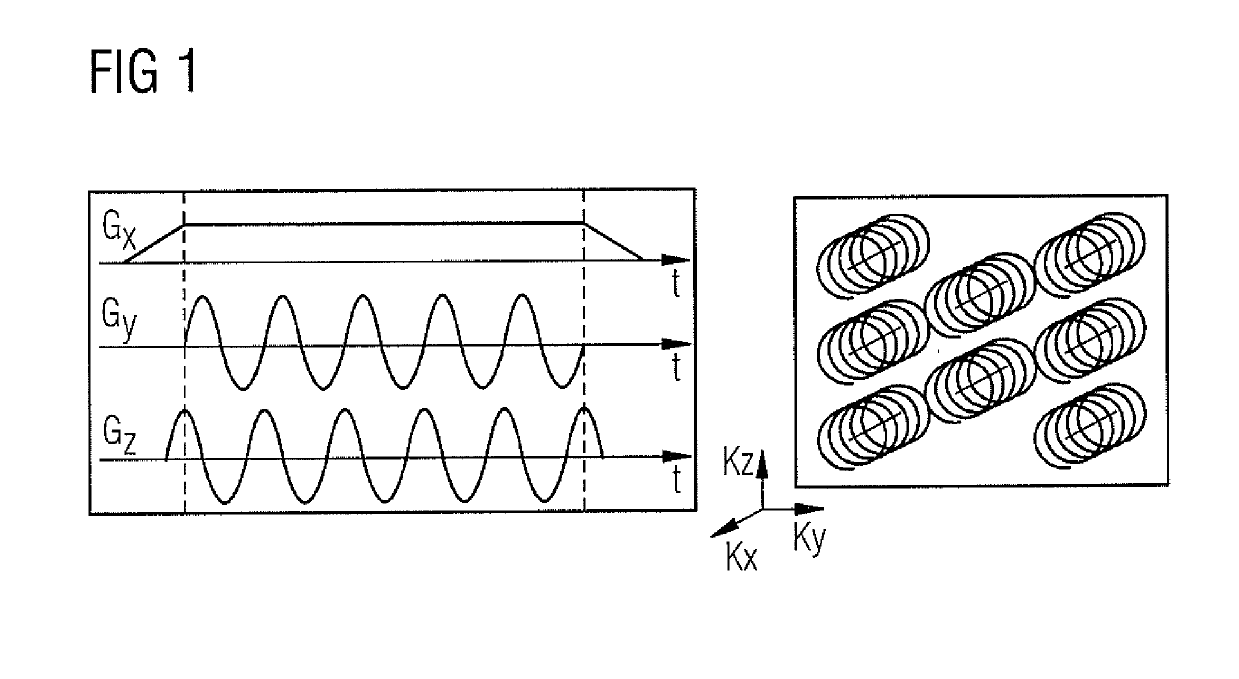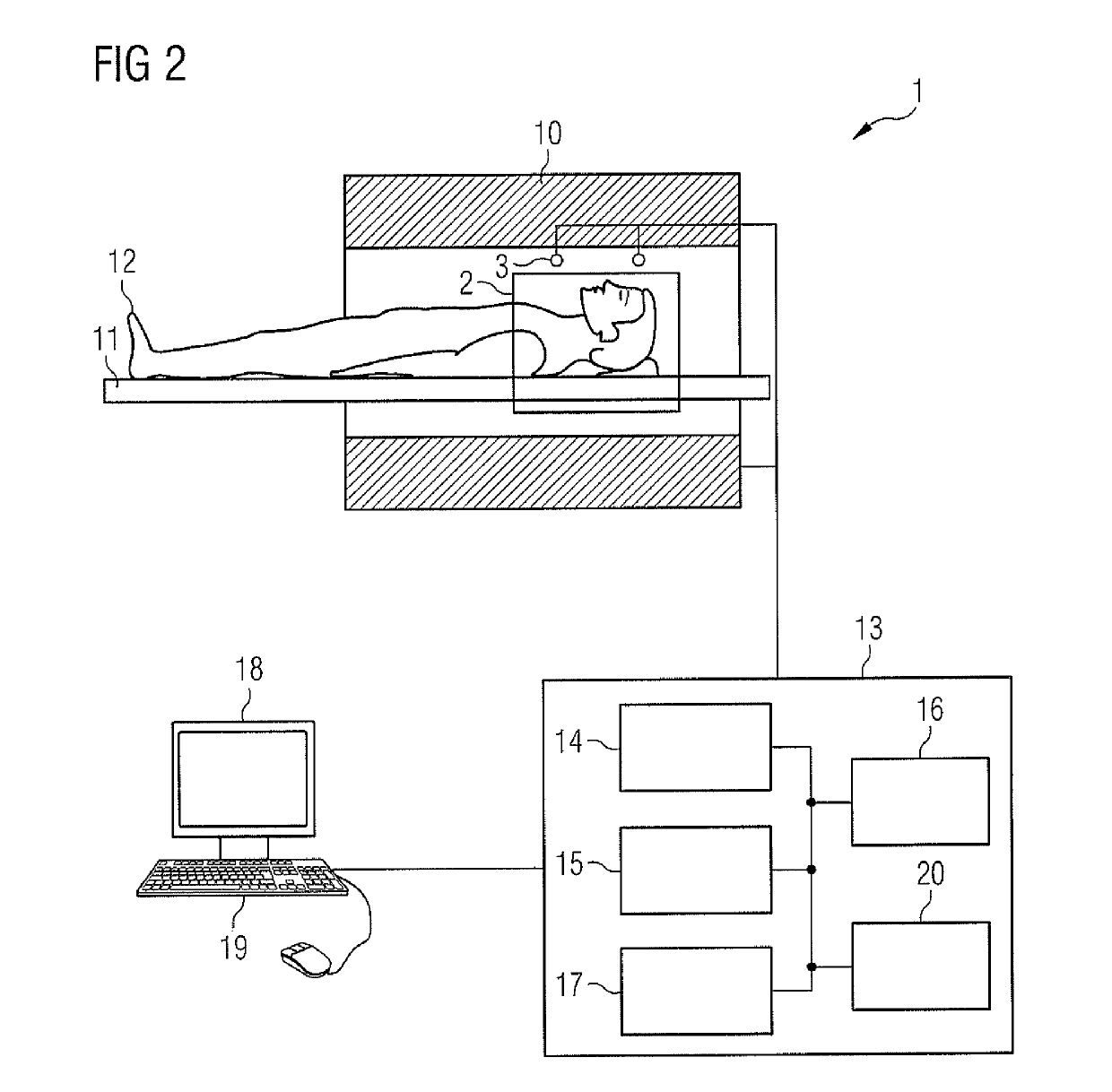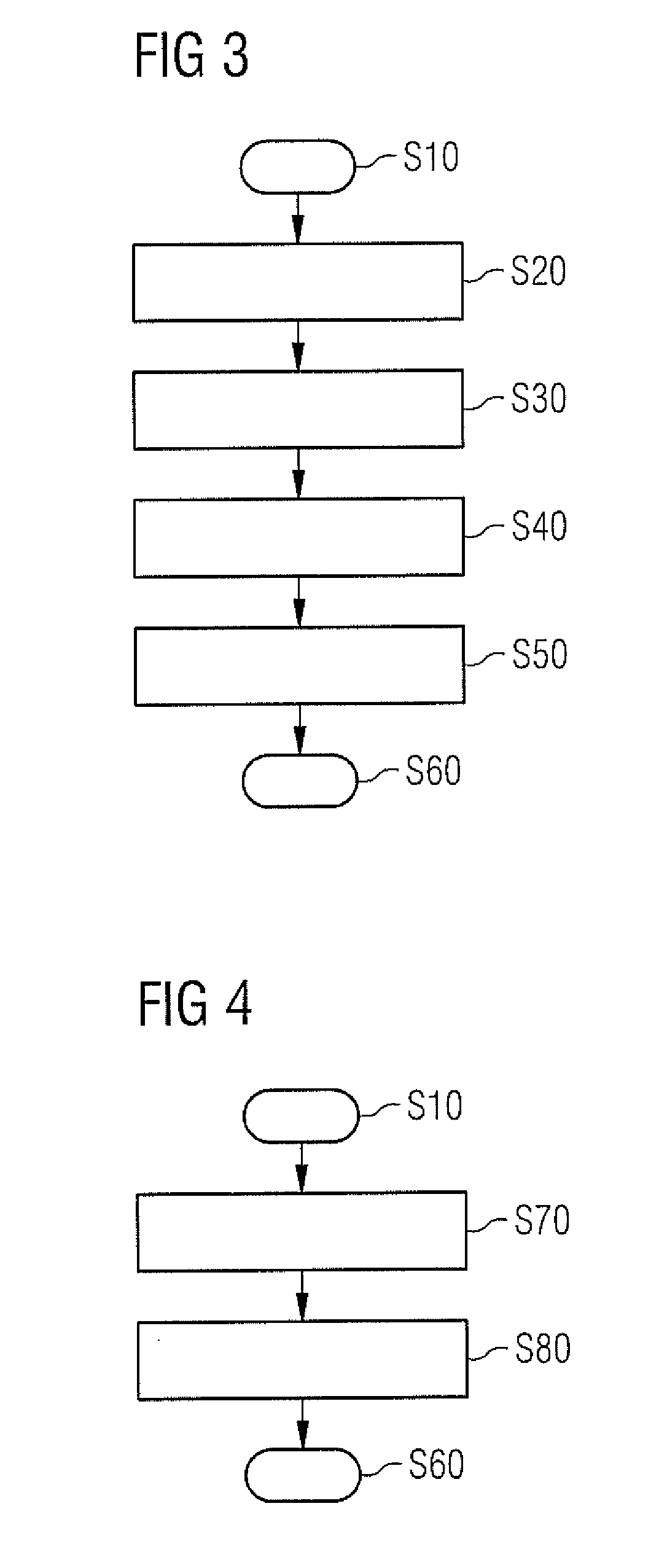Magnetic resonance imaging apparatus and method
a magnetic resonance and imaging apparatus technology, applied in the field of magnetic resonance imaging, can solve the problems of limiting the acceptance of magnetic resonance in clinical routine, increasing the risk of motion artifacts, and limiting patient throughput, and achieve the effect of fast mr scanning times
- Summary
- Abstract
- Description
- Claims
- Application Information
AI Technical Summary
Benefits of technology
Problems solved by technology
Method used
Image
Examples
first embodiment
[0068]The following further characteristics of the MR measurement method according to the invention are advantageous for improved MR image quality and reduced MR measurement time. For example, the MR measurement method can be a 3D Turbo Spin Echo (TSE) technique. The RF pulses can be non-selective refocusing pulses. The RF pulses can include excitation, refocusing, and store / recall pulses. The RF pulses can induce variable flip angles. By the above specific configurations of the RF pulses, the length of the echo trains can be increased encompassing more phase encoding steps, which leads to shorter MR measurement or acquisition times. The sequence of k-space measurement points for detecting the undersampled MR measurement data can be ordered corresponding to variable flip angles induced by the RF pulses. In a further embodiment, the method can be adjusted for an isotropic measurement resolution.
second embodiment
[0069]The MR measurement data according to the invention can be provided using a wave-CAIPI MR measurement method.
[0070]Summarizing, MR imaging methods for generating an MR image of an examination object in a MR apparatus comprising at least two receiving coils are provided, wherein gradient magnetic fields are applied to the examination region concurrent with stimulated echo signals, such that trajectories, which are not constant lines, are generated in k-space. According to a first embodiment of the invention, a sequence of RF pulses is applied to generate stimulated echo signals in the examination object, undersampled MR measurement data are detected during receiving of said stimulated echo signals in the at least two receiving coils using the curved k-space trajectories, and fully sampled MR measurement data are generated from the undersampled MR measurement data using sensitivity information of the at least two receiving coils. According to a second embodiment of the invention,...
PUM
 Login to View More
Login to View More Abstract
Description
Claims
Application Information
 Login to View More
Login to View More - R&D
- Intellectual Property
- Life Sciences
- Materials
- Tech Scout
- Unparalleled Data Quality
- Higher Quality Content
- 60% Fewer Hallucinations
Browse by: Latest US Patents, China's latest patents, Technical Efficacy Thesaurus, Application Domain, Technology Topic, Popular Technical Reports.
© 2025 PatSnap. All rights reserved.Legal|Privacy policy|Modern Slavery Act Transparency Statement|Sitemap|About US| Contact US: help@patsnap.com



